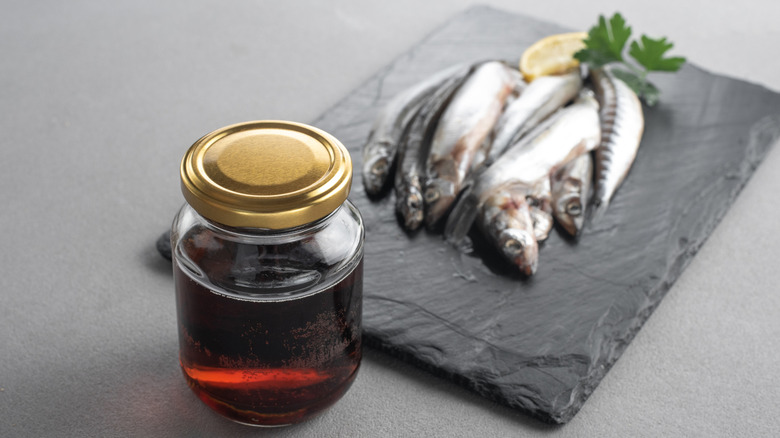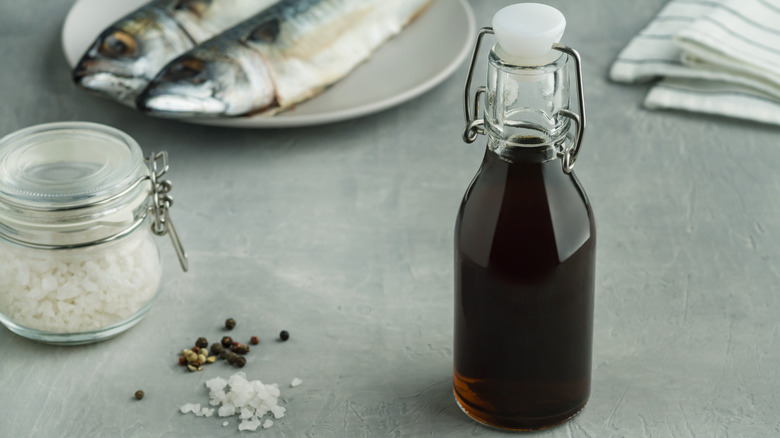One Of The Oldest Sauces In The World Is Made With Fermented Fish
If you're looking for some of the oldest recipes in the world, then you would do well to turn to ancient Rome. While it's not the source of the earliest known recipe (that particular honor currently goes to an anonymous Babylonian writer from about 4,000 years ago), ancient Roman texts do have some especially antique instructions. When it comes to sauces, one of the oldest we know of comes from the Roman Empire. Around 30 B.C., in the second volume of his "Satires," the Roman writer Horace mentions a stinky, salty, fish-based condiment called "garo," manufactured on the Iberian Peninsula (now Spain and Portugal). Romans came to call this concoction garum.
Just a century later, around A.D. 77, Pliny the Elder wrote in "The Natural History" that garum was both popular and useful. He claimed it was originally made by the Greeks, was exquisitely salty, and had some medical applications — though he admitted it still smelled pretty bad.
As for actually making garum, ancient descriptions make it sound like thoroughly unpleasant work. Garum makers would first gut small fish, then place all of the animals' parts into fermentation vessels such as vats or large pots. After nearly a year of fermenting in the sun — a process that hinged on bacteria present in the fish entrails — the contents of the vessels would be mostly liquid and full of rich umami flavor. Many manufacturers included salt in the mix, while other garum makers added extra ingredients like herbs and wine.
How was garum actually used?
As for how garum was consumed by the adventurous eaters of Rome (seriously, they used honey in their eggs in a sweet omelet called ova spongia ex lacte), it's hard to tell from ancient sources exactly what happened when it finally made its way to Roman tables. However, scholars have a good guess that it was often deployed as a condiment and a flavoring agent in other dishes. It could also be refined into other sauces, including liquamen, which appears to have been the result of using brine to wash solid bits left behind in the fermentation pots. There were also class differences when it came to garum, with more pungent and liquid versions of the stinky sauce reserved for the upper classes.
With all of that historical background, it's no wonder modern scientists and chefs have become interested in recreating garum. However, they have experienced trouble getting the fermentation to kick off in old-style vessels and have found the process to be seriously labor intensive.
Chefs who have gotten their hands on garum say that a light hand is key when adding it to dishes, as a little bit of the stuff goes a long way. Instead of attempting to make it yourself, you may want to learn more about how to use modern fish sauces, staple ingredients in East and Southeast Asian cuisines. Consider an unsweetened Vietnamese fish sauce, Thai prik nam pla, or ishiri, which is a liquamen-like Japanese condiment made from salted, fermented squid guts.

